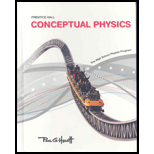
Concept explainers
To Explain: The importance of periodic table of elements
The difference between atoms, elements and molecules.
Explanation of Solution
Introduction:
Regular arrangement of elements in a tabular form is called periodic table of elements.
There are so many elements present in the nature. Some are artificial or manmade. Some are radioactive in nature. It was very difficult to remember the names and properties of all the elements. So, Mendeleev formulated this idea of putting all the elements in the table in a periodic way, called periodic table of elements. Study of elements becomes very easy after this type of arrangements of elements.
Atoms:
Atoms are the smallest of matter. It consists of nuclear and extra-nuclear part. Nuclear part consists of positively charged protons and neutrons. Extra-nuclear part is the part outside the nucleus which consists of negatively charged electrons revolving in affixed orbits/shells.
Element:
Element consists of same types of atoms.
Molecules:
A molecule consists of two or more atoms. There are two types of molecules; homoatomic and heteroatomic molecules.
In homoatomic-molecules, both the atoms are same. For example, in
In heteroatomic molecules, both the atoms are different. For example, in
Conclusion:
Periodic table of element is very useful for understanding the properties of elements.
Chapter 17 Solutions
Conceptual Physics: The High School Physics Program
Additional Science Textbook Solutions
Physics for Scientists and Engineers: A Strategic Approach, Vol. 1 (Chs 1-21) (4th Edition)
Physics for Scientists and Engineers with Modern Physics
College Physics: A Strategic Approach (4th Edition)
Conceptual Integrated Science
College Physics (10th Edition)
Essential University Physics: Volume 2 (3rd Edition)
 College PhysicsPhysicsISBN:9781305952300Author:Raymond A. Serway, Chris VuillePublisher:Cengage Learning
College PhysicsPhysicsISBN:9781305952300Author:Raymond A. Serway, Chris VuillePublisher:Cengage Learning University Physics (14th Edition)PhysicsISBN:9780133969290Author:Hugh D. Young, Roger A. FreedmanPublisher:PEARSON
University Physics (14th Edition)PhysicsISBN:9780133969290Author:Hugh D. Young, Roger A. FreedmanPublisher:PEARSON Introduction To Quantum MechanicsPhysicsISBN:9781107189638Author:Griffiths, David J., Schroeter, Darrell F.Publisher:Cambridge University Press
Introduction To Quantum MechanicsPhysicsISBN:9781107189638Author:Griffiths, David J., Schroeter, Darrell F.Publisher:Cambridge University Press Physics for Scientists and EngineersPhysicsISBN:9781337553278Author:Raymond A. Serway, John W. JewettPublisher:Cengage Learning
Physics for Scientists and EngineersPhysicsISBN:9781337553278Author:Raymond A. Serway, John W. JewettPublisher:Cengage Learning Lecture- Tutorials for Introductory AstronomyPhysicsISBN:9780321820464Author:Edward E. Prather, Tim P. Slater, Jeff P. Adams, Gina BrissendenPublisher:Addison-Wesley
Lecture- Tutorials for Introductory AstronomyPhysicsISBN:9780321820464Author:Edward E. Prather, Tim P. Slater, Jeff P. Adams, Gina BrissendenPublisher:Addison-Wesley College Physics: A Strategic Approach (4th Editio...PhysicsISBN:9780134609034Author:Randall D. Knight (Professor Emeritus), Brian Jones, Stuart FieldPublisher:PEARSON
College Physics: A Strategic Approach (4th Editio...PhysicsISBN:9780134609034Author:Randall D. Knight (Professor Emeritus), Brian Jones, Stuart FieldPublisher:PEARSON





